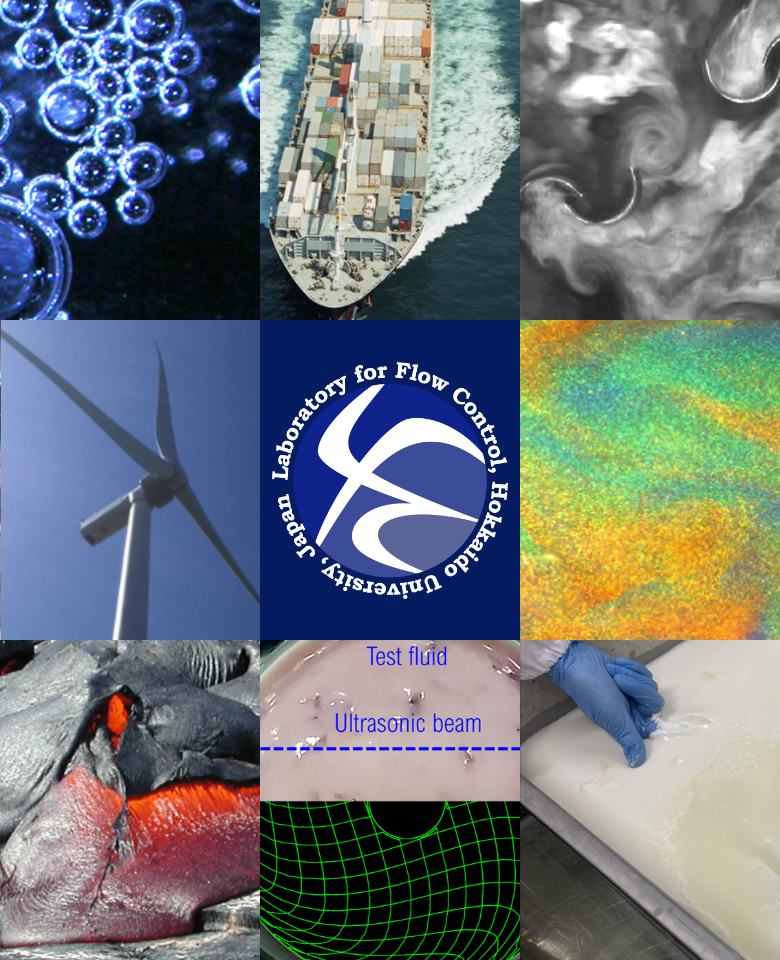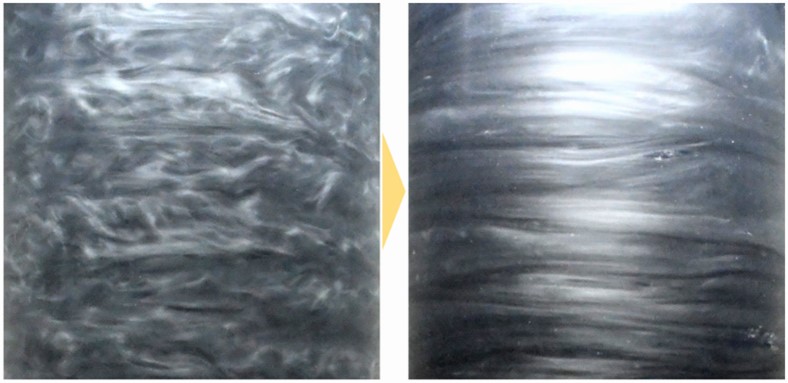

Laboratory for Flow Control-Fluid mechanics experiment for science & technology-

Drag reduction by additives
Turbulence is a ubiquitous phenomenon in various engineering situations, such as flow around vehicles/ships, pipelines, and fluid machinery. One of the most critical problems of turbulence is large fractional drag caused by the momentum transport between flow and walls, which results in a huge energy loss. Therefore, effective methods for turbulence control are intensively required to realize a sustainable society. One promising answer is turbulence suppression due to the addition of a quite small amount of surfactant or polymer. This phenomenon is known as a simple method for turbulence control and has the potential for significant drag reduction. Nevertheless, even the governing equation of flow of such dilute solutions is not established because, in contrast with Newtonian fluids, its physical properties interact with flow in a very complicated manner. Now, we tackle this issue to reveal the physical mechanism of the drag reduction by investigating a fully developed turbulence between rotating two cylinders, called Taylor-Couette flow. Our apparatus, which is one of the largest Taylor-Couette facilities in the world, allow us to conduct flow velocimetry combined with flow visualization by a laser and a high-speed camera.





